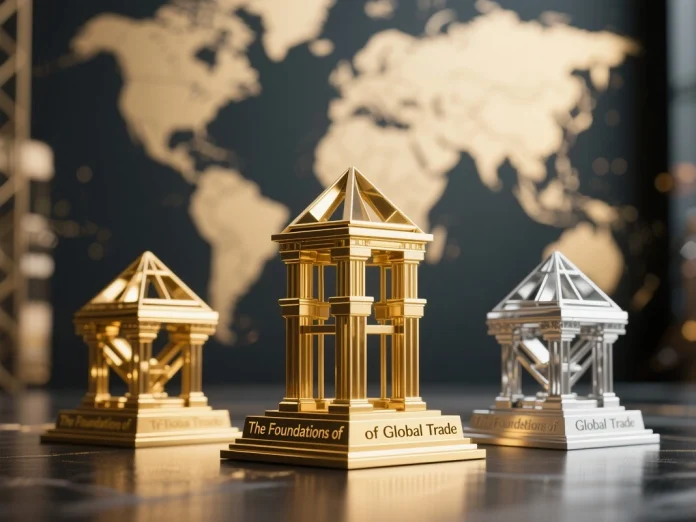From the earliest civilizations to the bustling global markets of today, precious metals like gold and silver have been more than just glittering objects. They have been the lifeblood of economies, the symbols of power, and the foundational pillars of international trade. Their unique properties—rarity, durability, and intrinsic value—made them the perfect medium of exchange, shaping the course of human history and laying the groundwork for the complex financial systems we rely on today.
The Dawn of Currency: From Barter to Bullion
Before the advent of coins, trade was a cumbersome process of bartering. A farmer might trade a sack of grain for a weaver’s cloth, but what if the weaver didn’t need grain? This inefficiency limited the scale and scope of commerce. The solution emerged from the earth itself. Gold and silver, easily divisible and universally desired, became a more portable and standardized form of wealth. The earliest known coins, minted in Lydia (modern-day Turkey) around 600 BCE, were a mix of gold and silver called electrum. This innovation revolutionized trade by providing a common, measurable standard of value. Suddenly, transactions could be simplified, and wealth could be accumulated and transported with unprecedented ease.
This shift from a barter economy to a precious metals-based one wasn’t just a minor improvement; it was a fundamental leap forward. It enabled the growth of complex market economies, the establishment of merchant classes, and the financing of ambitious projects, from grand temples to vast empires. The Roman Empire, for example, built its colossal network of roads, aqueducts, and armies on the back of its gold and silver coinage, the denarius and the aureus.
The Rise of the Gold Standard: A Golden Age of Stability
For centuries, the value of currencies was directly tied to the amount of gold or silver a government held in its vaults. However, this bimetallic system, where both metals were used as legal tender, often led to instability. Fluctuations in the relative price of gold and silver could cause one to be hoarded while the other circulated, a phenomenon known as Gresham’s Law. This problem was largely resolved in the 19th century with the widespread adoption of the gold standard.
The gold standard was a monetary system in which the standard economic unit of account was a fixed weight of gold. Under this system, a country’s currency was convertible into a specific amount of gold. This created an era of unprecedented financial stability. Because the value of a currency was backed by a tangible asset, it was more trustworthy and less prone to hyperinflation. Nations that adopted the gold standard found it easier to engage in international trade economy because exchange rates were stable and predictable. For example, a British pound could always be exchanged for a specific amount of gold, as could a U.S. dollar, making it simple to calculate the exchange rate between the two.
This period, often called the “Golden Age” of international finance, facilitated massive growth in global commerce and investment. Countries knew the value of their exports would not suddenly plummet due to currency devaluation. It was a time when goods flowed freely across borders, and capital was invested in projects from railroads in America to colonial ventures in Asia, all underpinned by the universal trust in gold.
The End of an Era: The Decline and Fall of the Gold Standard
The gold standard, for all its benefits, was not without its flaws. Its rigid nature meant that a country’s money supply was limited by its gold reserves. In times of economic crisis, this inflexibility made it difficult for governments to stimulate their economies by printing more money. The Great Depression of the 1930s exposed these vulnerabilities. As a global economic crisis took hold, countries faced a choice: cling to the gold standard and endure severe deflation and unemployment, or abandon it to regain control over their monetary policy.
One by one, nations began to leave the gold standard. The United Kingdom suspended it in 1931, followed by the United States in 1933 under President Franklin D. Roosevelt. This move was initially seen as a radical step, but it gave governments the flexibility they needed to fight the depression with a more expansionary monetary policy.
The final nail in the coffin came in 1971 when President Richard Nixon unilaterally ended the convertibility of the U.S. dollar to gold, effectively dismantling the last vestiges of the global gold standard. This move, known as the “Nixon Shock,” ushered in the era of fiat currencies, where a currency’s value is based on government decree and trust rather than a physical commodity.
The Legacy of Precious Metals in Modern Finance
While we no longer use a gold standard, the legacy of precious metals in the global trade economy is undeniable. Gold and silver continue to be held in high regard, not as a direct medium of exchange, but as a safe-haven asset. In times of political or economic uncertainty, investors often flock to gold, seeing it as a store of value that is immune to inflation and the whims of central bankers. Central banks themselves still hold vast reserves of gold, a testament to its enduring status as a cornerstone of national wealth.
The principles established by the use of precious metals—the concept of a standardized unit of value, the importance of stability in international exchange, and the role of a trusted asset in times of crisis—have been carried forward into our modern financial systems. From the Bretton Woods system that followed World War II to the floating exchange rates of today, the foundations of global trade were built on the glittering legacy of gold and silver. They taught us the value of trust, the power of a stable currency, and the enduring human desire for something truly precious.



